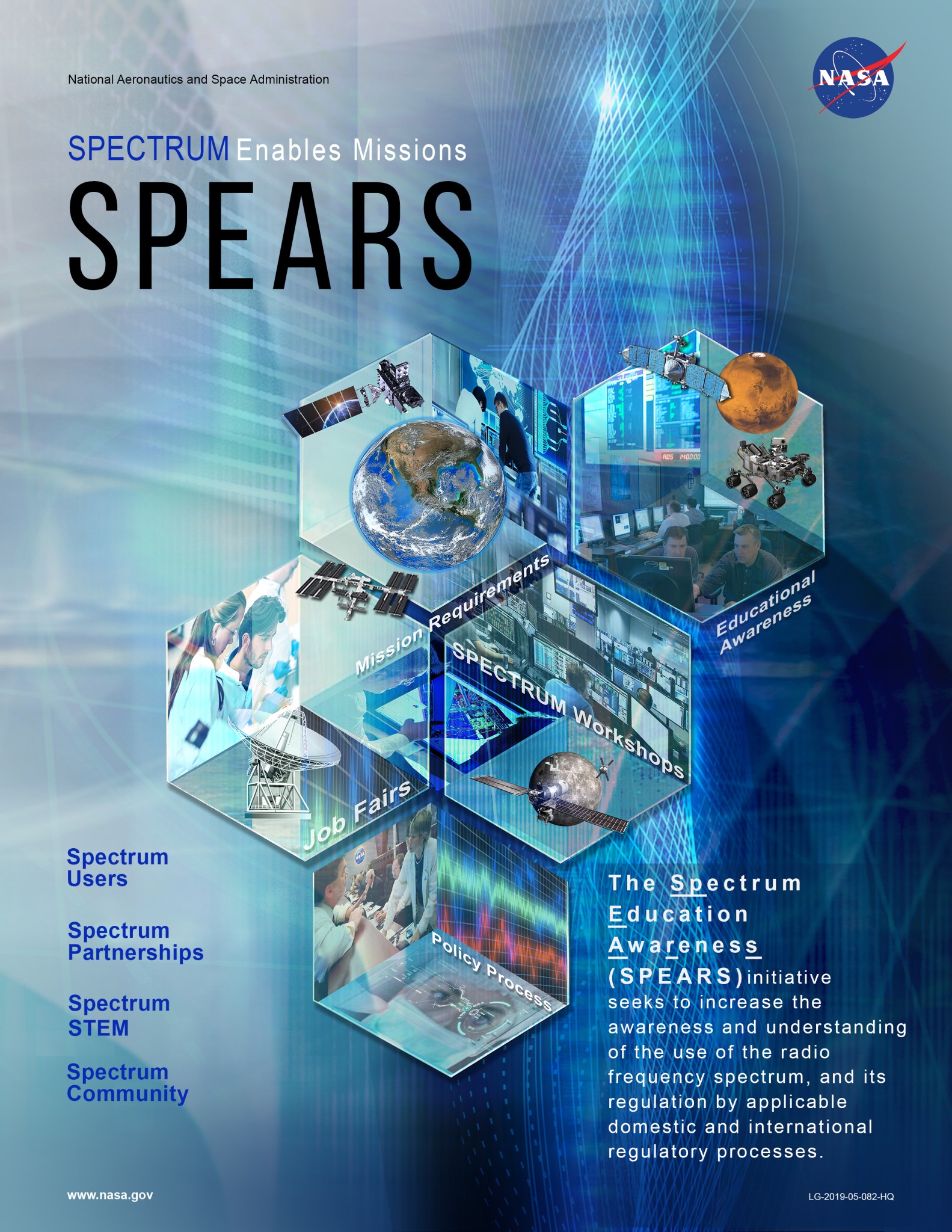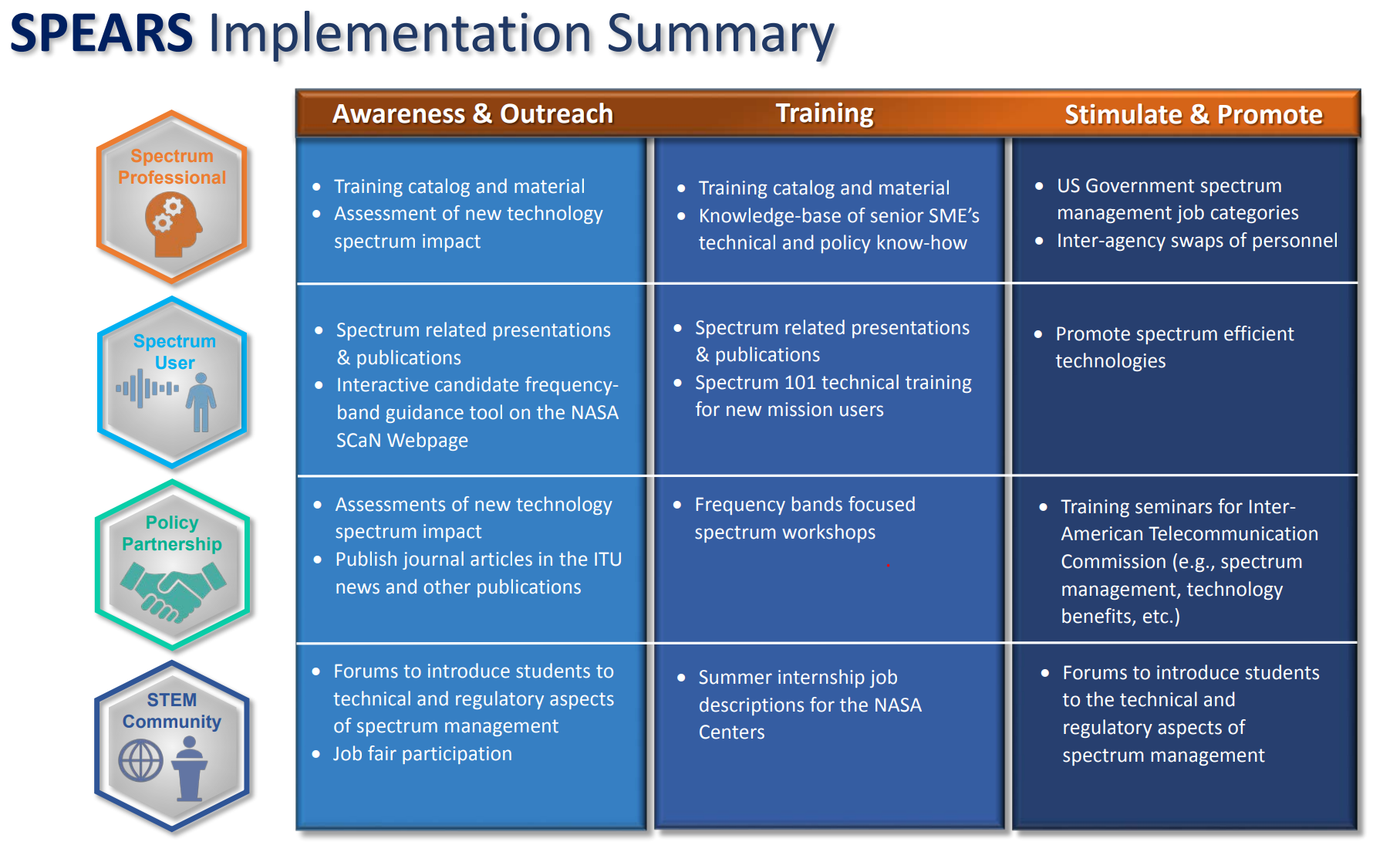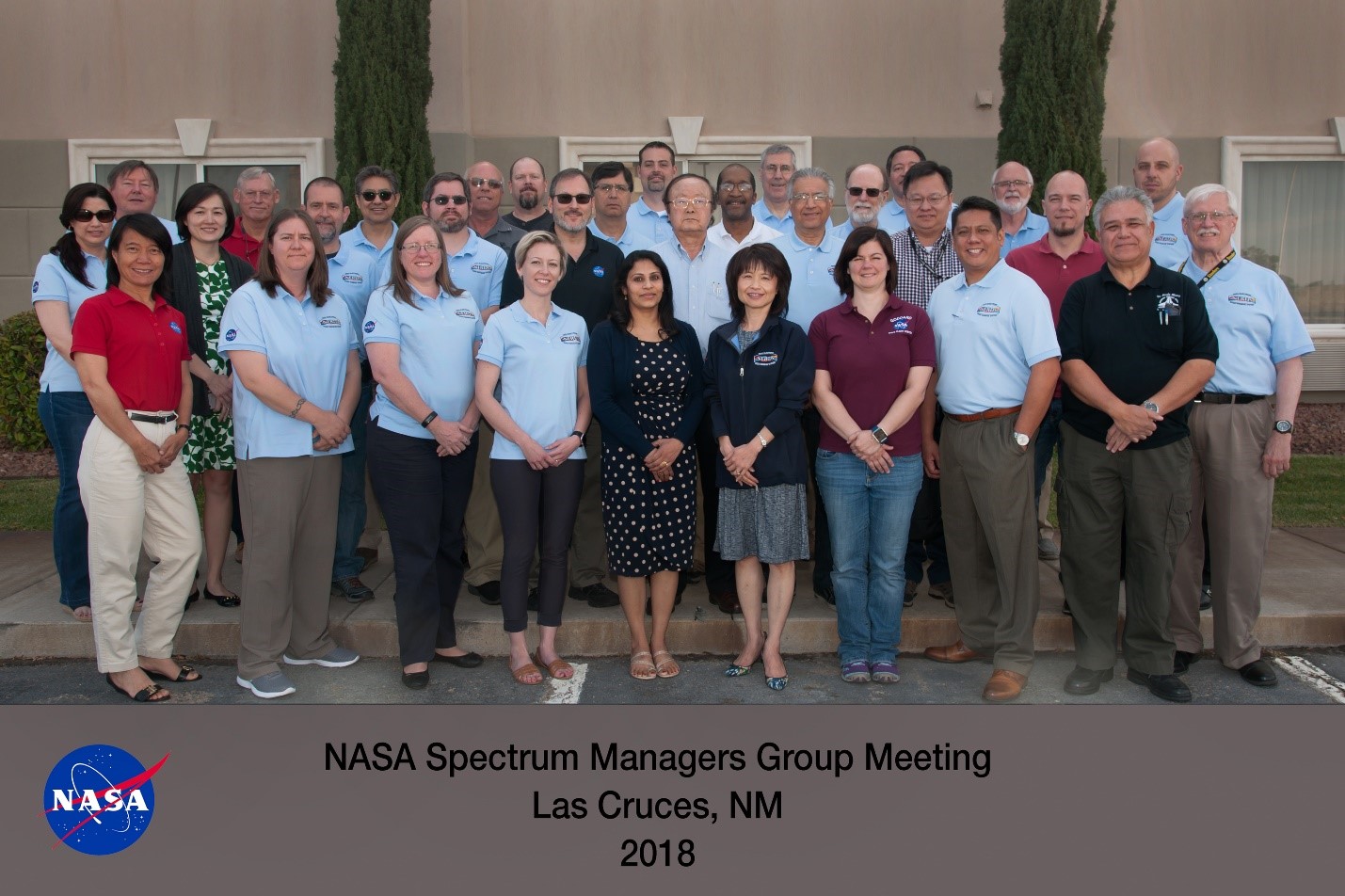
Spectrum Education Awareness (SPEARS)
Technological advancements such as 5G cellular networks, vehicular networks and the Internet-of-Things (IoT) are among the myriad of commercial and government applications competing for the radio frequency spectrum, a limited natural resource that is needed to support NASA’s missions. Spectrum managers across the agency need to be prepared to address the challenges posed by sharing spectrum in an increasingly congested environment. Spectrum Education Awareness (SPEARS) is a new Space Communications and Navigation (SCaN) Spectrum Management Division strategic initiative to increase the awareness and understanding of the use and management of the radio frequency spectrum.
The objectives of the SPEARS initiative are to safeguard NASA and U.S. spectrum-dependent technology innovations by attracting and training a future spectrum management workforce, as well as providing refresher and cross-functional training to existing spectrum experts. In addition, this initiative will provide NASA’s program and project managers with a basic understanding of spectrum processes and the need for early engagement between spectrum management personnel and NASA programs and projects. SPEARS will also provide a means to institutionalize closer collaboration with our domestic and international space and spectrum policy partners. SPEARS will enable NASA spectrum managers to meet spectrum challenges by delivering new tools and messaging resources.
For more information, please contact us at HQNASA-Spectrum@mail.nasa.gov.

Activities to be carried out over a period of five years, starting in October 2018, support the SPEARS strategy and objectives across four communities: 1) spectrum users, 2) spectrum professionals, 3) policy partners, and 4) Science, Technology, Engineering and Math (STEM). These activities include focused training for spectrum professionals, assessing spectrum impacts of NASA technology initiatives, facilitating an international publication highlighting the benefits of space borne
Earth observation, developing student internship job opportunities supporting NASA spectrum managers and stressing the importance to mission and program offices of considering spectrum issues and requirements early during the mission planning phase.
Increasing spectrum awareness and understanding through SPEARS will provide many benefits to NASA, its domestic and foreign partners, as well as the STEM community. These benefits include increased knowledge of spectrum policies and processes; cross-functional education of spectrum disciplines; enhanced coordination of spectrum interests; more unified spectrum regulatory positions; increased efficiencies in processing NASA’s spectrum requirements and education of the next generation of spectrum managers.
SPEARS will aid NASA in preparing for and meeting future challenges resulting from rapidly evolving and emerging commercial and government systems with an insatiable appetite for the limited natural resource of radio frequency spectrum.
For more information about SPEARS contact Rene J. Balanga (rj.balanga@nasa.gov).


























